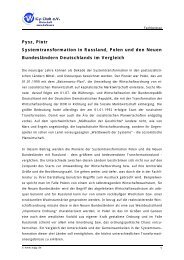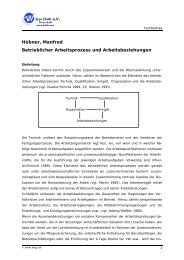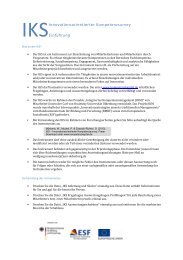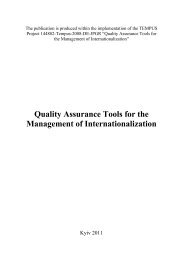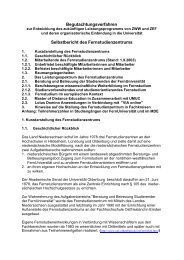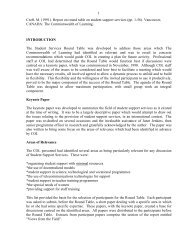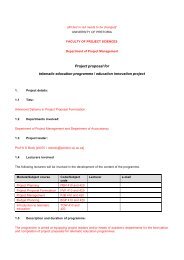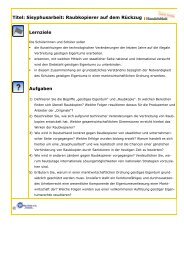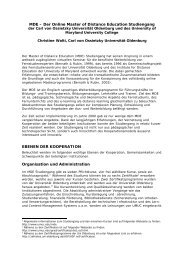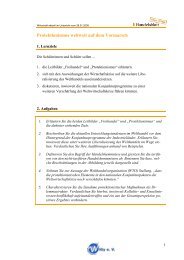Assessing the Costs and Benefits of Telelearning: A Case Study ...
Assessing the Costs and Benefits of Telelearning: A Case Study ...
Assessing the Costs and Benefits of Telelearning: A Case Study ...
You also want an ePaper? Increase the reach of your titles
YUMPU automatically turns print PDFs into web optimized ePapers that Google loves.
Finally, an instrument for assessment measures has been created to compute: <strong>the</strong><br />
number <strong>of</strong> notes in <strong>the</strong> database, <strong>the</strong> percentage <strong>of</strong> notes that are co-authored, <strong>and</strong> <strong>the</strong><br />
percentage <strong>of</strong> o<strong>the</strong>r people's notes students have read.<br />
Historical Background. Begun in 1986, CSILE (Computer Supported Intentional<br />
Learning Environment) brought toge<strong>the</strong>r cognitive scientists <strong>and</strong> computer scientists<br />
working with teachers <strong>and</strong> students at school sites to develop a collaborative, problemsolving<br />
centered educational model making use <strong>of</strong> characteristics unique to computers.<br />
During its early years <strong>the</strong> s<strong>of</strong>tware was piloted in a number <strong>of</strong> mid range grades mainly 5-<br />
6 classrooms. While grounded in that experience it is now being used in regular<br />
educational programs ranging from primary grades to graduate school. It appears to be<br />
one <strong>of</strong> <strong>the</strong> most intensively researched in <strong>the</strong> classroom setting during its core<br />
developmental stages.<br />
Being created in <strong>the</strong> schoolroom context, <strong>the</strong> s<strong>of</strong>tware was developed for a MAC<br />
platform <strong>and</strong> has been undergoing conversion to make it available on a PC platform. In<br />
1996, WebCSILE was generated which allows users to remotely log into CSILE<br />
databases using Netscape or Micros<strong>of</strong>t Explorer browsers. O<strong>the</strong>r relatively recent<br />
functions created from ongoing research include <strong>the</strong> branching function previously<br />
described.<br />
Pedagogical support has been created in 2 forms. The Progressive Curriculum<br />
Network(PCN) emerged from <strong>the</strong> CSILE project in 1995. Modeling its pedagogical<br />
roots, <strong>the</strong> Network's aim was to make possible sustained collaborative knowledgebuilding<br />
activity via <strong>the</strong> Internet among CSILE teachers <strong>and</strong> researchers towards<br />
progressively developing curriculum designs <strong>and</strong> materials. The CSILE database for this<br />
group's collaborations is titled, <strong>the</strong> Knowledge Forum. It represents <strong>the</strong> latest<br />
reincarnation <strong>of</strong> CSILE, a commercial version. Creation <strong>of</strong> WebCSILE, <strong>the</strong> browser that<br />
allows access from a PC platform was directly linked with growth <strong>of</strong> this Network. The<br />
Knowledge Society Network (KSN), part <strong>of</strong> <strong>the</strong> <strong>Telelearning</strong> Research Network extends<br />
<strong>the</strong> knowledge building community to art galleries, science Centers, <strong>and</strong> some health care<br />
pr<strong>of</strong>essionals as well as <strong>the</strong> educational community.<br />
Pedagogical Evolutions. "The real distinctiveness <strong>of</strong> CSILE lies in a harmonious<br />
integration <strong>of</strong> research-based s<strong>of</strong>tware <strong>and</strong> teaching methods that have grown up toge<strong>the</strong>r,<br />
each influencing <strong>the</strong> o<strong>the</strong>r <strong>and</strong> resulting in a powerful combination." (Overview <strong>of</strong> CSILE,<br />
http://csile.oise.on.ca/intro.html.) It was developed with teachers using techniques such<br />
as, <strong>the</strong> Jigsaw <strong>and</strong> Reciprocal Teaching. For example, using a Jigsaw exercise, students<br />
formed groups to research a certain piece <strong>of</strong> a larger question. They recorded <strong>the</strong>ir work<br />
on <strong>the</strong> computer using <strong>the</strong> database. Then groups were reformulated so that each person<br />
in <strong>the</strong> new group had a "missing piece" to contribute to <strong>the</strong> overall picture for <strong>the</strong> new<br />
group.<br />
Over time, however, in <strong>the</strong> research papers <strong>the</strong> focus appears to have shifted away<br />
from developing o<strong>the</strong>r techniques to adapting <strong>the</strong> database to make it <strong>the</strong> primary<br />
environment for knowledge building, hence <strong>the</strong> following description: CSILE is a<br />
problem-centered, collaborative, knowledge-medium designed to encourage cognitive<br />
skill development among school children (Scardamalia et al., 1989, Student Use Of<br />
Branching In A Computer-Supported Discussion. Jim Hewitt, Jim Webb, & Peter<br />
Rowley, p1.)<br />
60



